Women of Discovery
As an environmental engineer and science nerd who has spent all of my adult life focused on women’s equality, I have my dream job. I am Managing Director of WINGS WorldQuest, a nonprofit organization that recognizes and supports extraordinary women in science and exploration from all over the world. Our international community of intrepid women explorers help us better understand the nature of our world and promote conservation on land, sea and air. We provide funding for their research and initiatives; showcase their discoveries widely through webinars, online publications, social media, and lectures; and provide a platform for them to support each other in their work.
Last summer, my husband and I took our two teenage daughters on a round-the-world trip focused on visiting with visionaries who are running unique and groundbreaking projects that are making our world a better place and creating harmony with humanity, wildlife, and nature. So of course we visited with some WINGS Fellows along our journey.
Dr. Gladys Kalema-Zikusoka, who won the WINGS 2011 Women of Discovery Humanity Award, was the first wildlife veterinarian in Uganda. She discovered that with people living on the edge of the mountain gorilla’s forest habitat, the gorillas were contracting diseases from livestock feces, bacteria found on scarecrow clothing, and other accessible points of human and livestock contact. Through postmortem investigations and community reconnaissance, she concluded that the declining health of the mountain gorillas was directly related to poor human conditions in the neighboring communities, poor human health was related to poverty, and poverty was linked to lack of family planning. There are now only 800 mountain gorillas in the world, with 400 of them in Uganda’s Bwindi Impenetrable Forest.
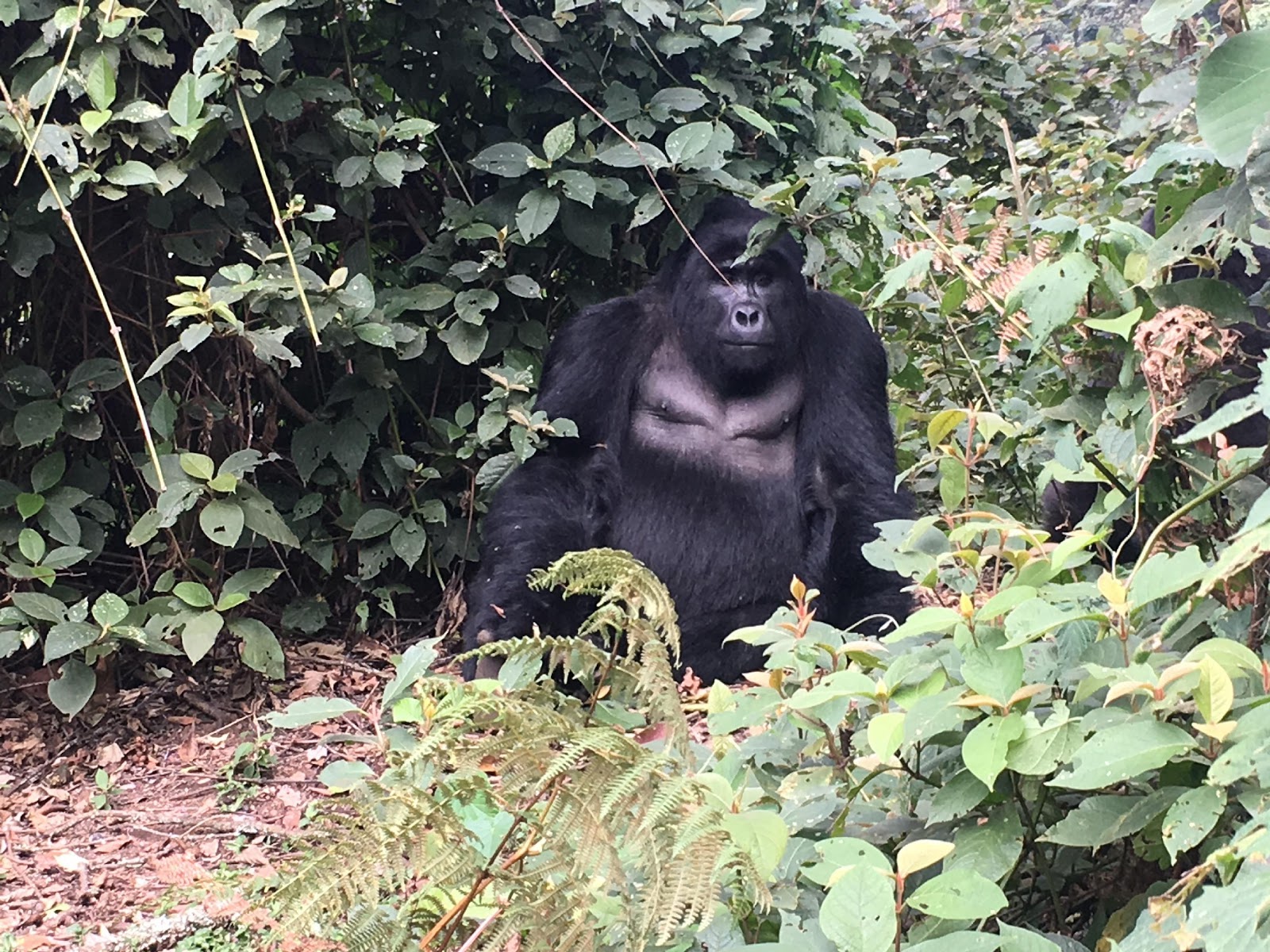
Gorilla in Bwindi Impenetrable Forest
Dr. Gladys founded Conservation Through Public Health (CTPH) to promote a more healthy symbiosis between humans, livestock, and mountain gorillas. Since CTPH has been active in this area, the percentage of families practicing family planning has grown to more than double the national average, and trained gorilla chasers have played an important role in sending gorillas who enter neighboring communities back into the forest.
My family visited with Dr. Gladys and the CTPH field crew at their camp in Buhoma. Of course we couldn’t go to Uganda without going gorilla tracking with Dr. Gladys. Unfortunately our 13 year-old daughter had to stay back at camp. There is a strict age limitation of 15 and older because younger children have a higher rate of infection that can easily spread and are more easily excited by the gorillas, thereby causing the gorillas to become aggressive. Access to the gorillas is also very restricted by providing limited daily permits at $600 each.
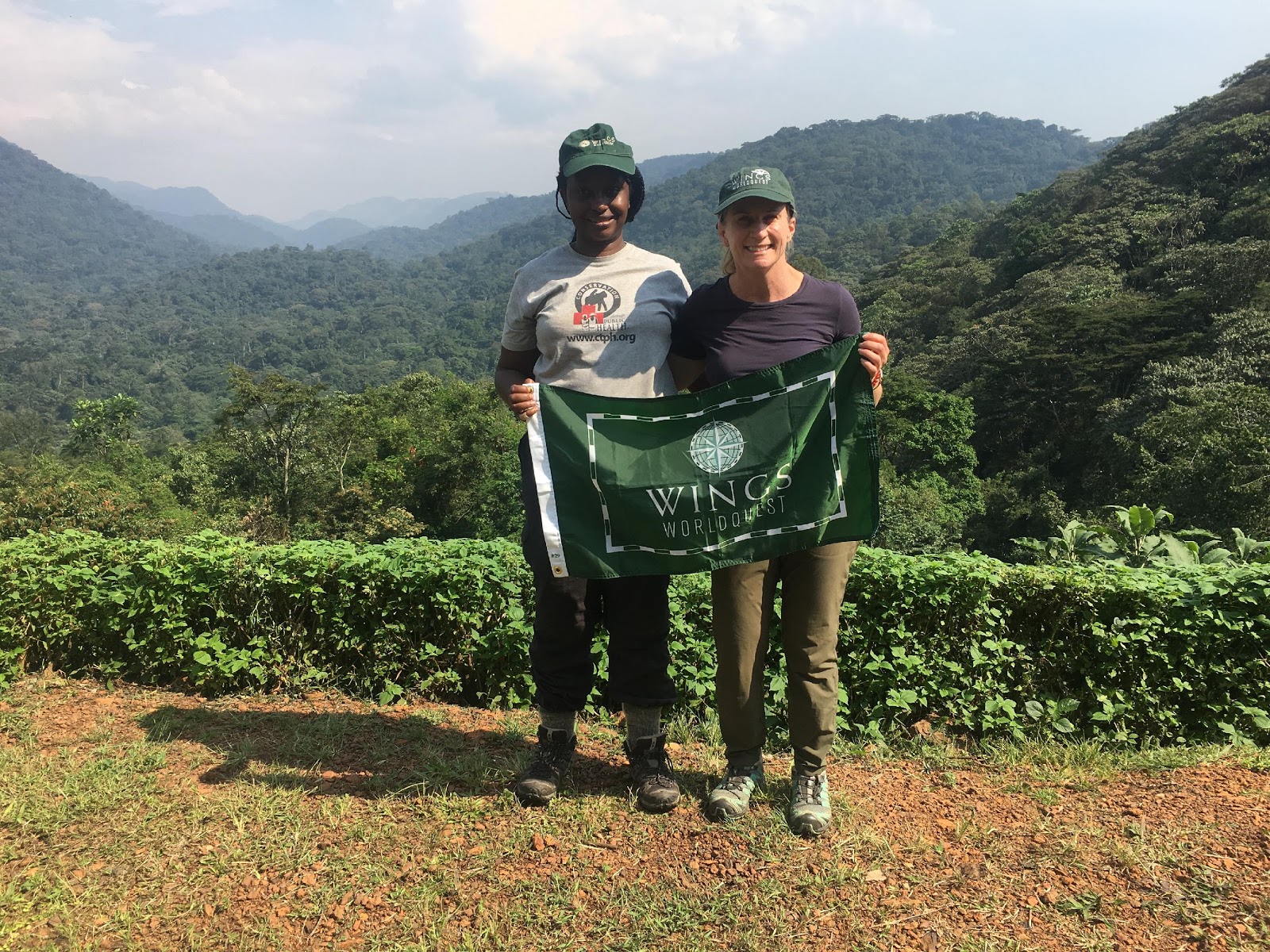
Dr. Gladys Kalema-Zikusoka and Yael Jekogian in Buhoma, Uganda
They warned us that it could take 15 minutes to find them or all day. Once we found them, we would be allowed no more than one hour to be with them. We were fortunate to only spend about an hour hiking into the dense forest before reaching the family of gorillas we were tracking. We stayed at least 7 meters from them, as directed by our guides. We watched the whole family munch on leaves and grass, young gorillas play high in the trees, and babies try to imitate and break into whatever action they could. It was hard to keep up with them. They were on the move, easily dancing and climbing through dense and steep forest slopes.
The Lion Guardians, founded in 2007 by WINGS Fellow Leela Hazzah and Stephanie Dohreney, work with members of the Maasai tribe in Kenya and Northern Tanzania to promote coexistence with the lion population. When the Lion Guardians started, there were only 2 lions in the Selenkay Conservancy in southern Kenya because Maasai would kill lions in retaliation when a lion killed any of their livestock. They often would kill a whole pride by poisoning a kill. They now train Maasai warriors to be “Lion Guardians,” who have helped the lion population in Selenkay grow from 2 to 40.

Yael Jekogian and Leela Hazzah
We accompanied a few of the Lion Guardians on their daily routine. They start at 7 am tracking lions and their prey by looking for fresh footprints. They record everything, which is ultimately input to an electronic monitoring system to track the populations and their whereabouts in the conservancy.
Once the tracking tasks were completed, we went looking for a pride of 9 lions that were known to be in the area. They found them easily, even in the thick brush, and we watched the group of 3 mothers and 6 cubs up close and personal.
The Lion Guardians took many photos of all of the members of the pride. They use the whisker patterns to identify each individual lion, as no two patterns are the same. They are working on perfecting a computer program that uses this information to identify lions by photograph.
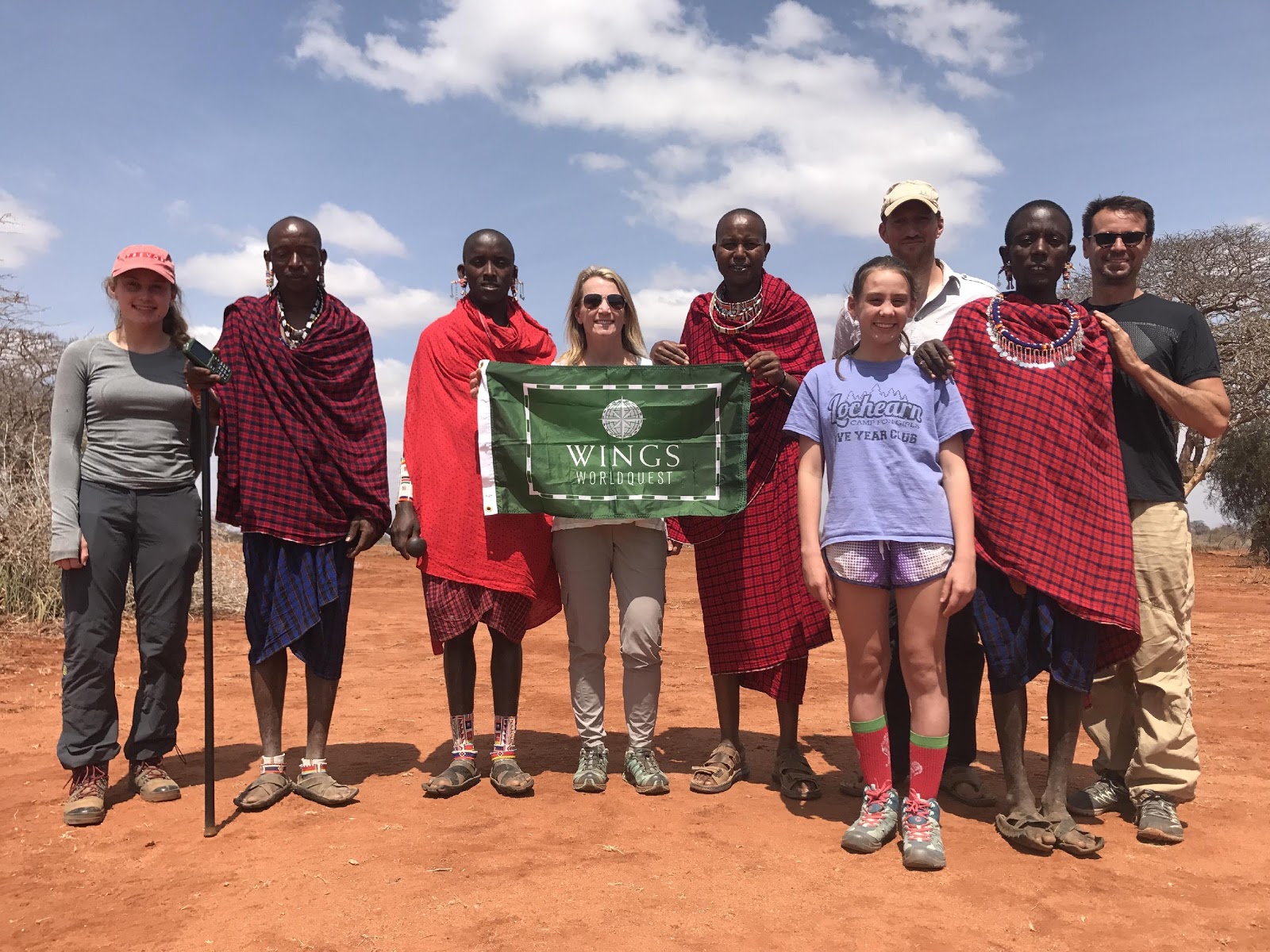
The Lion Guardians with the Jekogian Family
The Lion Guardians also keep herders notified of where the lions are so they can take their livestock in the opposite direction for grazing. They recover and return lost livestock so that they don’t become prey for the lions. This simple task is a great contributor to negating potential human/animal conflict.
If and when a lion does kill a cow, the villagers become angry and emotional and want to retaliate. It is the Lion Guardians’ job to immediately intervene, calm the villagers down, and remind them why it is important to conserve the lions. This is one of the most challenging tasks for the Lion Guardians.
For generation, Maasai warriors have received respect through a special lion name when they kill their first lion. Now there is a new way to build respect. Lion Guardians is one of the most coveted jobs in this region. When the women were polled last year and asked whether they would be more attracted to a man who had killed a lion or who was a Lion Guardian, 99% responded Lion Guardian.
Porini Amboseli Camp is a small, comfortable, all-inclusive camp in Selenkay Conservancy. Their Maasai guides will take you to see the lions in Selenaky up close and personal.
Next on my list of WINGS Fellows to visit:
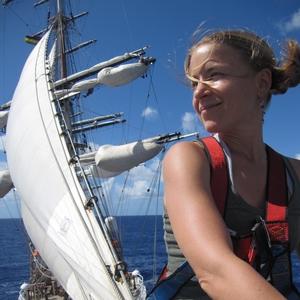
Anna Cummins
Anna Cummins won the Women of Discovery Sea Award in 2009, two years after she founded 5 Gyers to empower action against the global health crisis of plastic pollution through science, education, and adventure. Plastic waste has taken over our oceans. It is accumulating and circulating endlessly in the five main gyres of our world’s ocean. 5 Gyres’ research and activism helped lead to President Obama signing a ban on the selling and distributing of products that contain microbeads, which are tiny plastic particles that were used in skincare products and are one of the biggest contributors to plastic pollution in our natural waters. Their next adventure will be July 31 through August 8, 2018 in Indonesia’s Coral Triangle, from Bali to Komodo. Citizen scientists can grab a spot aboard the Sea Safari VII and work along with the 5 Gyres crew as they monitor plastic pollution in the region.
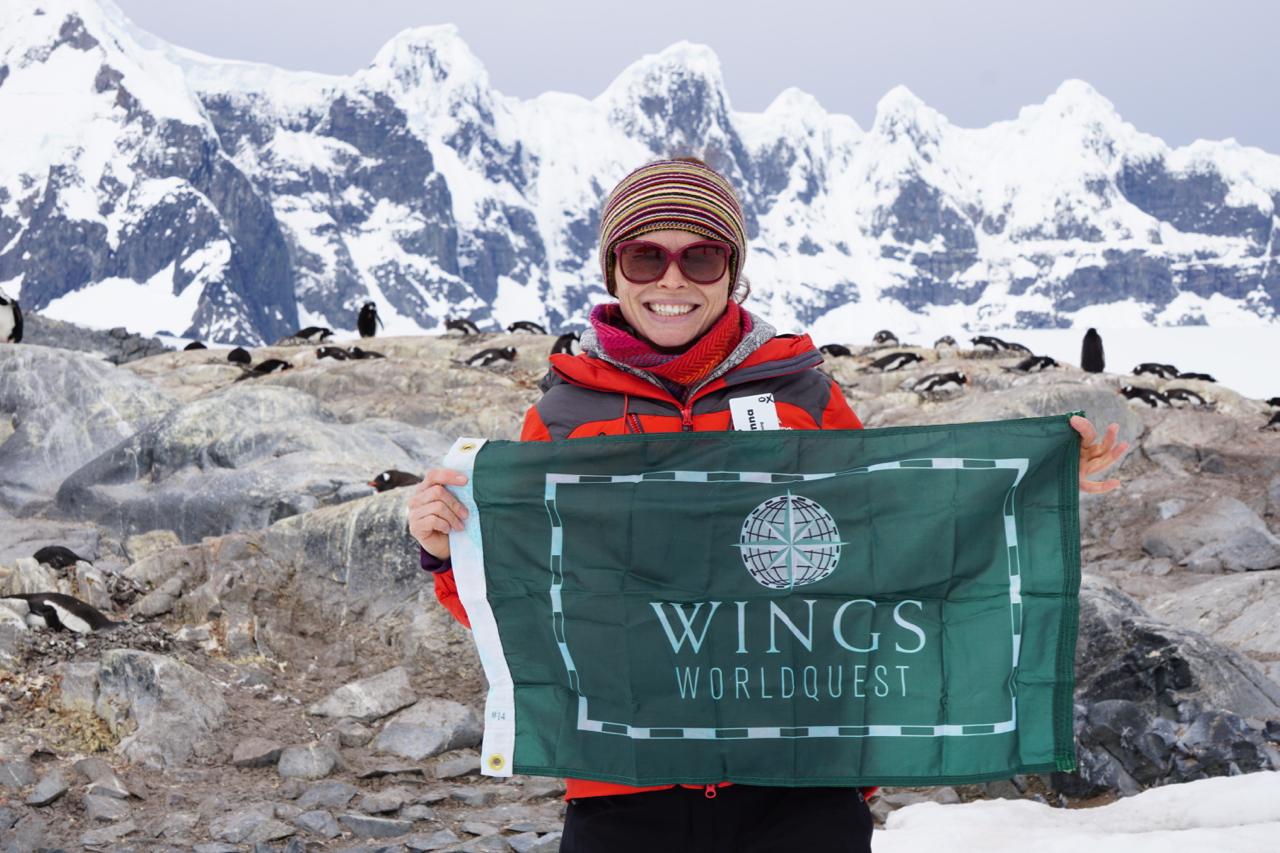
Joanna Young in Port Lockroy, Antarctica
Joanna Young and a ship of 75 women scientists carried the WINGS flag aboard the maiden voyage of the Homeward Bound Expedition in December 2016 on a 21-day voyage through Antarctica. Homeward Bound is an initiative that aims to elevate the voices of women in science in the hopes that they will play a large role in influencing scientific policy in the years to come. One of the goals of Homeward Bound is to discuss sustainability and global issues related to climate change, making Antarctica a fitting backdrop because of its importance in the study of global warming. Homeward Bound’s leaders hope to reach 1,000 women with critical science backgrounds over the course of 10 years. Homeward Bound 2018 will set sail in February with 80 women scientists. Applications for Homeward Bound 2019 have already closed. You can sign up to receive notification when applications for Homeward Bound 2020 become available in mid to late 2018.
